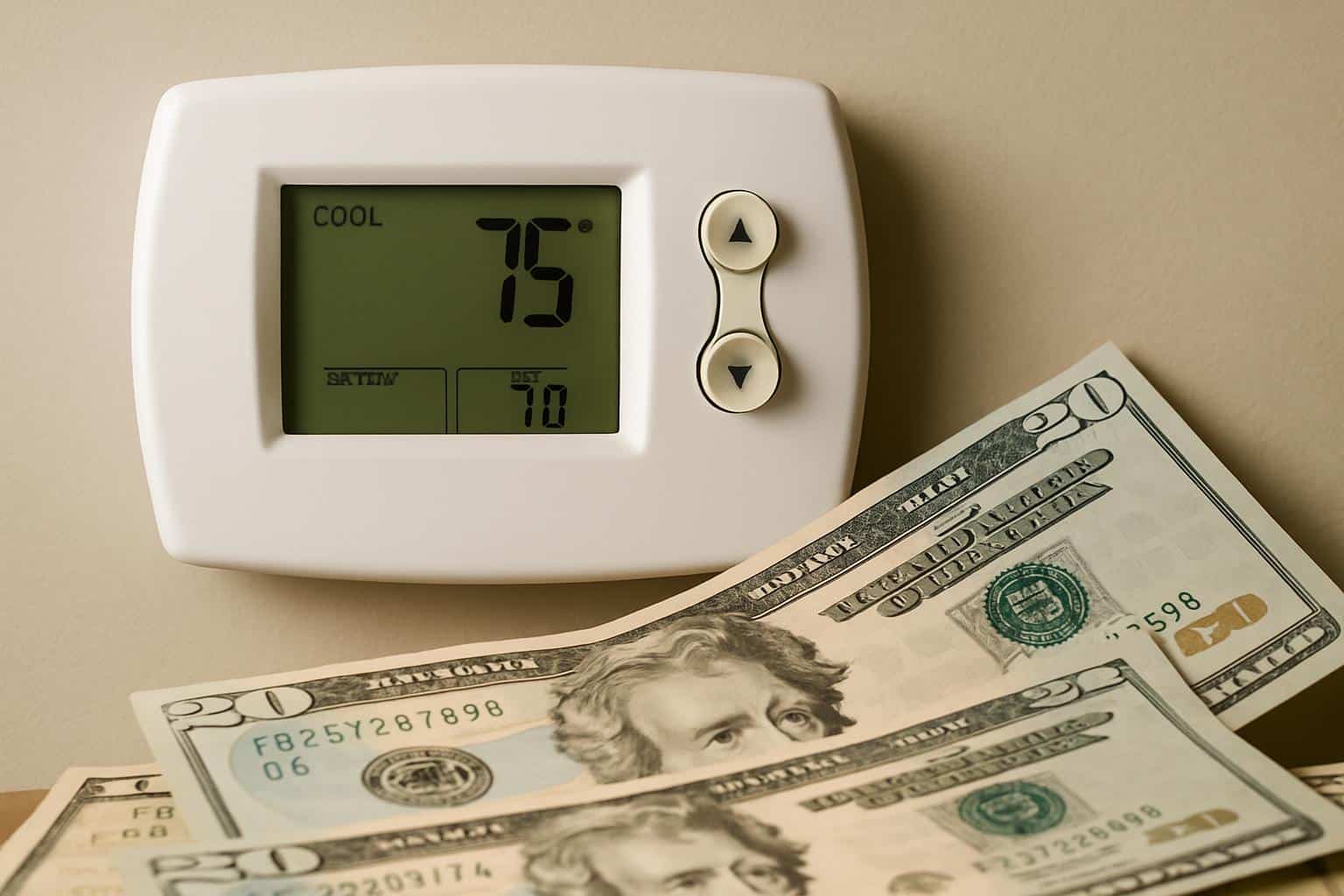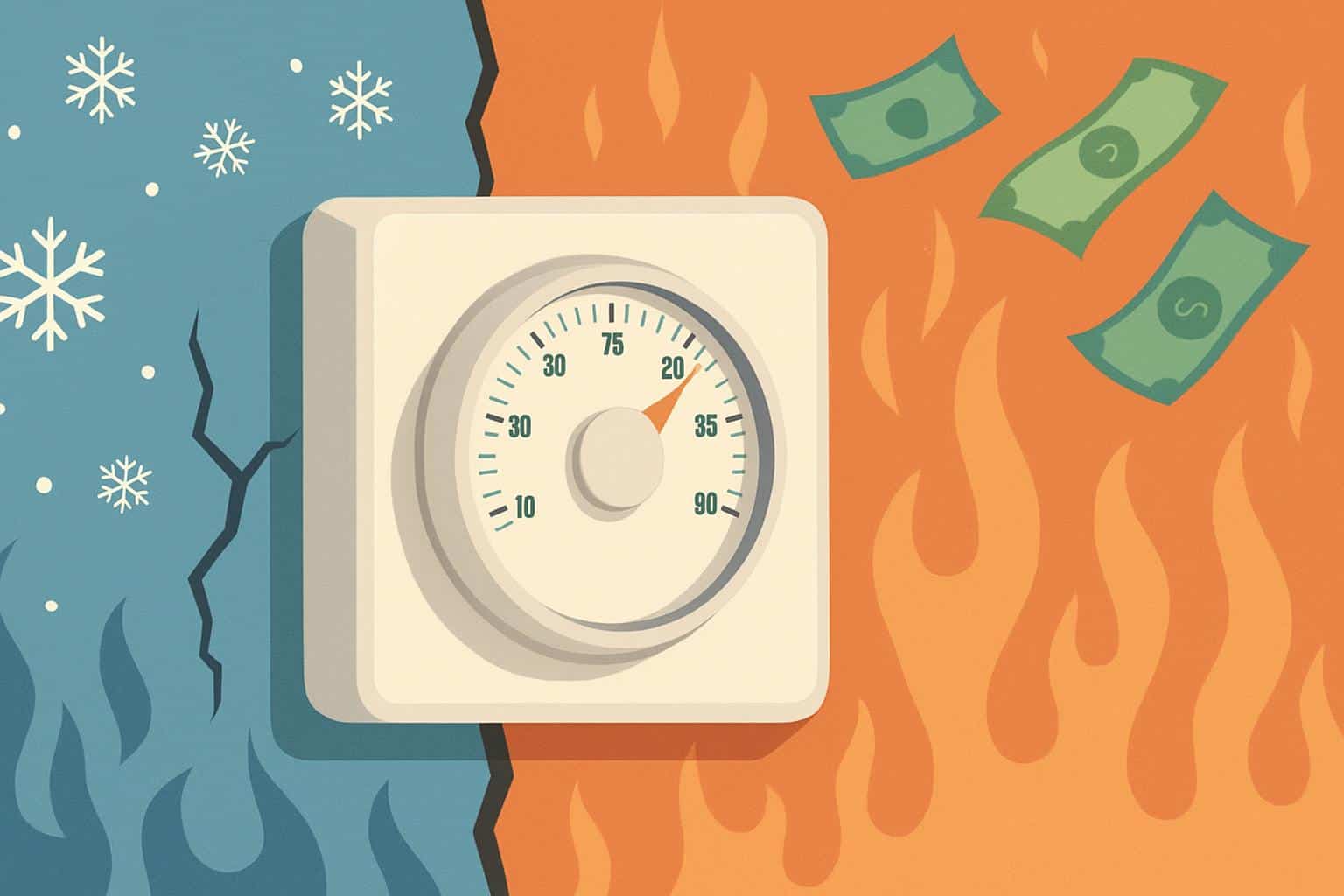If your heating and cooling bills are out of control, the way you use your thermostat may be to blame. Heating and cooling represent about half of a typical home’s energy use, according to the U.S. Energy Information Administration, so small miscues can snowball into big wastefulness.
Three mistakes show up time and again, say energy pros: poor placement, overly ambitious or untimely setpoints, and improper use of fan and system modes.

The fixes are not remodel-worthy — just a few smart tweaks that pay off in comfort and savings.
Mistake 1: Poor Thermostat Placement Makes for Muddy Readings
Where your thermostat is located determines how your HVAC operates. Hang it in direct sunlight or near a source of heat such as ovens, televisions or lamps and the device will “see” a warmer room than you experience. The air conditioner may then run unnecessarily and overcool the house due to that false reading.
Drafty areas are equally a problem. A thermostat situated near an exterior door, window with air leaks or a supply register might read cooler than the balance of a home, prompting the furnace to run longer than necessary. The result is inconsistent warmth and wasted energy.
Location also matters by room. Allowing a guest bedroom or infrequently used hallway to dictate your whole-home temperature probably doesn’t reflect how and where the household functions. If that space runs a bit warmer or cooler naturally, then the system will chase a target that doesn’t really match real-life comfort.
“Best practice, according to ACCA and guidance from ASHRAE, is to locate the thermostat on an interior wall in a frequently occupied space with relatively steady air movement,” Mellard said — say, the living room or central hallway of your home — at about 52 to 60 inches above the floor. Avoid places that get direct sun, exterior walls, drafts and within a few feet of supply or return vents.
Multi-story houses, and those with such unyielding hot and cold spots, should consider systems that employ remote room sensors or zoning. It may be possible with a factory-programmed offset, but few smart thermostats today can average multiple sensors for your real comfort profile where it counts — the home.
Mistake 2: Extreme Setpoints & Unfit Schedules
“Cranking it” does not heat or cool more quickly. Every system has a fixed output, so pushing the setpoint much beyond your goal only results in running equipment longer than necessary, overshooting comfort, and wasting energy. With heat pumps, big setbacks can even cause pricey electric resistance backup heat to kick in.
The government’s Department of Energy recommends turning the thermostat back 7 to 10 degrees for eight hours a day in order to save as much as 10 percent a year on heating and cooling. That is the power of discipline — small, gentle changes instead of boom-bust cycles.

These days, DOE and ENERGY STAR will set your thermostat even higher in summer (about 78 degrees with you at home) or lower in winter (68 degrees while awake), provided it then increases the cooling setpoints while you sleep or are away, and decreases the heating ones.
Pre-cool or pre-heat, so comfort is scheduled to your arrival, not chasing comfort after the fact.
Smart features help. The actions of setbacks and recovery are automatically carried out by geofencing, occupancy detection and learning algorithms. ENERGY STAR says your typical smart thermostat will provide somewhere around 8 percent in average HVAC savings if you use the scheduled and eco modes as intended.
Another trap: living on “Permanent Hold.” That button locks in your settings and quietly turns off cost-saving schedules. Be judicious about applying too much temporary holding, and then go back to your programmed schedule.
Mistake 3: Using Fan Modes Incorrectly and Forgetting to Calibrate
A common switch to On that many homeowners make is for constant circulation of the fan. It seems to make sense, but it may have a downside. A typical blower motor, which uses 300 to 500 watts when running continuously (as do many units), can increase that by well over 200 kWh a month — easily $30 to $50 at prevailing electricity rates. In humid climates, however, running the fan continually can cause moisture to re-evaporate from the coil and raise indoor humidity while lessening comfort.
For most homes, Auto is the correct setting as the fan will operate only with heating or cooling. If you prefer a little of both, some systems feature a Circulate mode that cycles the fan on and off to help balance temperatures without the full-time energy penalty.
Accuracy matters, too. Inaccuracy can lead to a miscalibrated thermostat being one or two degrees off — enough to feel and affect runtime. Compare the readings to those from a reliable thermometer placed nearby, then adjust your thermostat’s calibration or offset setting, if available. Ensure that the device is not obstructed by furniture, hidden by decorations or blemished with dust particles that could disrupt its sensors.
Finally, keep the brains up to date. Change the batteries before they die, activate software updates on “smart” models and take advantage of maintenance reminders for filter swaps and seasonal checkups. The goal here is a calm, stable control center that makes your HVAC system run smoothly, not a fussy gadget leading the system on wild goose chases.
The bottom line: Put the thermostat where it can determine the truth, program it to reflect your life and use modes that help efficiency along, rather than sabotage it. Those three solutions can tame hot-and-cold headaches — and keep hundreds of dollars in your pocket over the span of a year.

